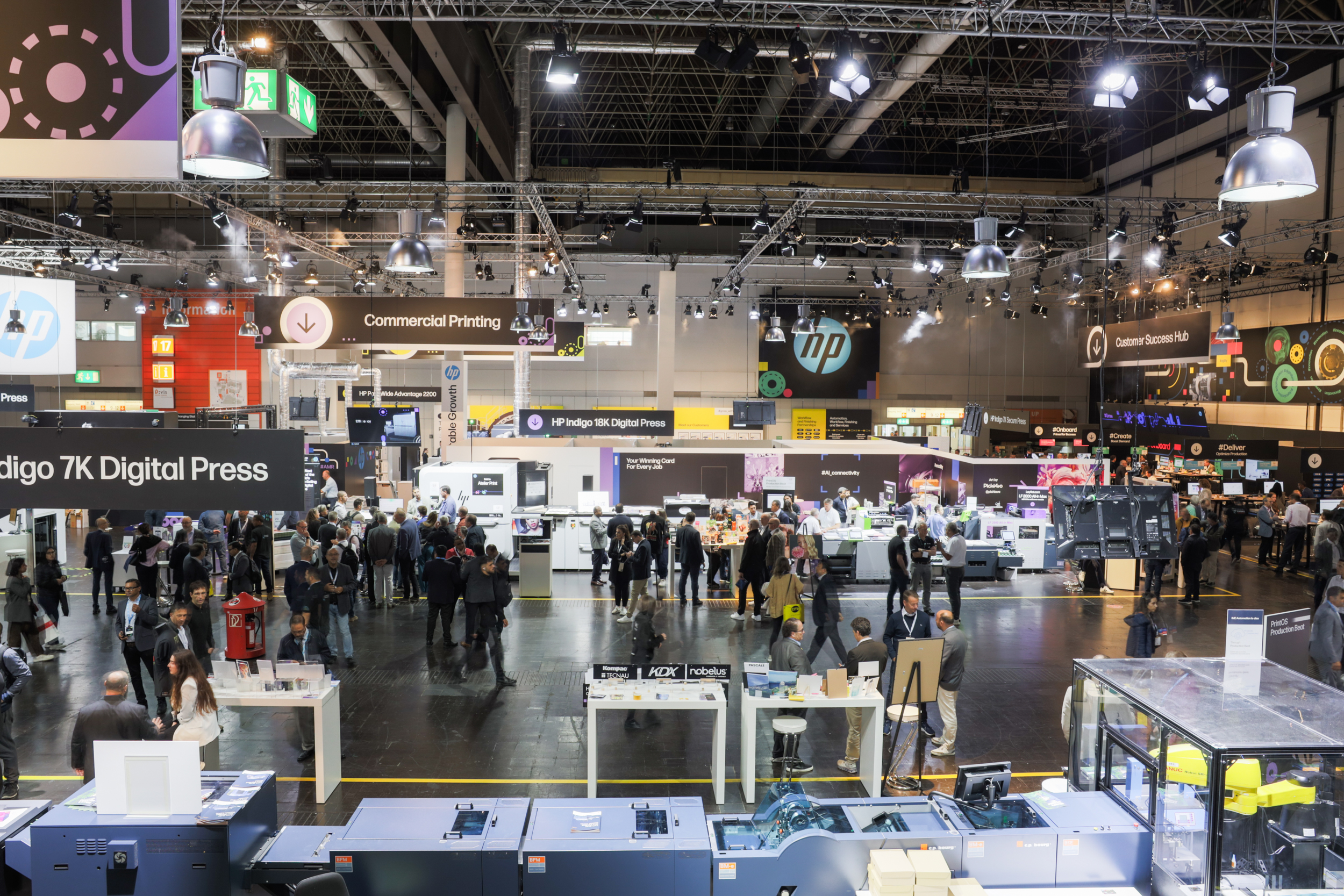HP is not holding back at this year’s DRUPA. Briefing analysts on the announcements, partnerships, and products the company is showcasing, the team was enthusiastic about taking production print beyond devices and strengthening the entire print ecosystem, from democratising customer creativity to delivering ‘intelligent automation powered by artificial intelligence’ for its print service partners – all with a focus on sustainability. The message was clear that the company is investing and innovating across the production, label and packaging environment.
Ambitious and extensive Canva partnership
The president of HP Inc. Imaging, Printing & Solutions, Tuan Tran, explained the rationale behind the company’s partnership with design platform Canva, saying: ‘I am often asked whether it is technology or people that act as a growth constraint on the print industry. It’s people and use cases that are the issue. There is so much amazing technology on show here at DRUPA, but what is missing is how to unlock that technology – how do we get customers to realise that they can use all these features and get exceptional output? That’s what our partnership with Canva provides – a creative engine in front of these output devices to democratise the creative process.’
Under the partnership with visual communications platform Canva, HP will provide on-demand design-to-print services and experiences via its global network of HP Industrial Print and HP Large Format-equipped print service providers (PSPs). Canva has 185 million monthly users and boasts 95% of the Fortune 500 on its client roster. This represents a considerable potential customer base for HP PSPs, while giving Canva customers seamless access to advanced print and finishing solutions. The logistics of production and shipping will be automated for Canva via HP PrintOS Site Flow.
Canva is also launching an Enterprise subscription programme, catering for demand from large organisations seeking to make professional-quality design and print more efficient and accessible to in-house departments, fostering collaboration and interoperability. HP’s global sales and marketing teams will implement Canva Enterprise as part of the deal.
From a sustainability perspective, the system is tuned to drive print requests to local suppliers, minimising the number of delivery miles for finished output.
In Quocirca’s view, there are many neat synergies within this partnership. Canva has democratised design and HP is delivering the next step, with the ambition to drive more print jobs into the professional production market. It will be interesting to see whether this affects in-house business print volumes, as customer-facing jobs will now be easier to elevate to a more professional standard.
Sustainability
Water consumption is one of the many intractable challenges of manufacturing, and water-based inks naturally use a lot of water, so it was interesting to hear that HP had this year moved all its HP Latex water-based inks to using reclaimed water. Singapore, where the company’s inks are manufactured, has a drinking water shortage and has invested heavily in technology to recycle water and return it to the consumption pool. It is known as NEWater and is ultra-clean, which makes it suitable for many non-potable uses, as well as adding to reservoirs during dry periods.
Amplify programme expands to PSPs
HP also announced that it would be expanding its Amplify sustainability programme, already in place within its office print channel, to its Print Service Provider partners. HP will support partners in assessing their carbon footprint, providing tools to calculate CO2 and track how they are progressing. HP’s spokesperson acknowledged that this is a journey, but the company has been encouraged by the amount of interest among its PSPs.
Circularity is another key focus for HP, including device longevity. This is a particularly strong point in the press market segment, with the company estimating that 97% of its page presses sold are still operating.
HP is looking at sustainability in every decision, and announced that 70% of its stand at DRUPA had been reused from previous shows, with no carpets and minimal disposable décor. Notably, the company is supporting local NGOs via the output it generates during demonstrations, printing their magazines and books so the output is not wasted.
Quocirca believes HP is a sustainability leader and demonstrably looking for multichannel methods to improve the sustainability performance of its own manufacturing and the practices of its partners. It is good to see sustainable decision-making at micro-level, as well as a larger scale, which indicates that the company is succeeding in developing a culture of sustainability, as well as driving big initiatives.
Intelligent automation powered by artificial intelligence
HP recently announced advancements to its PrintOS platform that it believes will unlock the potential of intelligent factories. Its target is to connect everything (including non-HP devices) and everyone to the same database and use the data alongside AI overlays to analyse performance, optimising it for every factory, production line, and PSP. The aim is to be able to tailor recommendations to boost commercial success and deliver efficiencies.
Other features of PrintOS include mobile print queueing, which enables overnight print runs to be managed remotely, something that will appeal to production managers.
In Quocirca’s view, ecosystems are increasingly important across the print sphere, and here HP is powering up its proprietary solution while allowing for the existence of third-party devices. The power is in the data, wherever it comes from, and HP understands this. It also understands the commercial pressures its PSPs face, and PrintOS advances are aimed at relieving them – at both a strategic and operational level.
You have Successfully Subscribed!
Stay ahead with industry insights
Receive Quocirca’s latest articles and research updates





